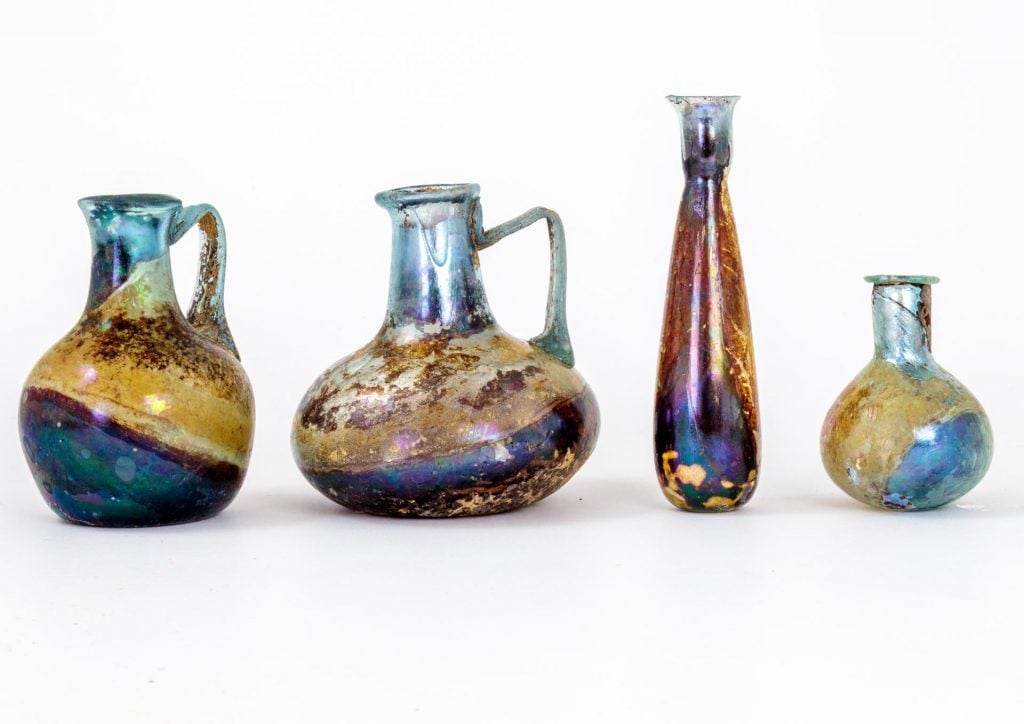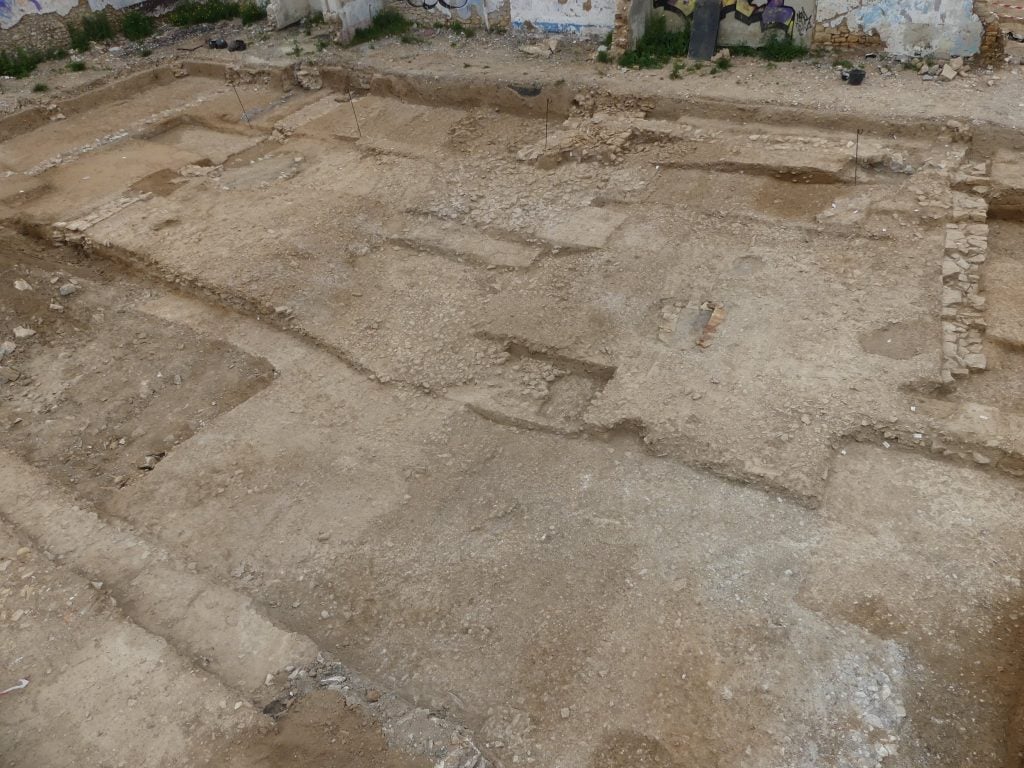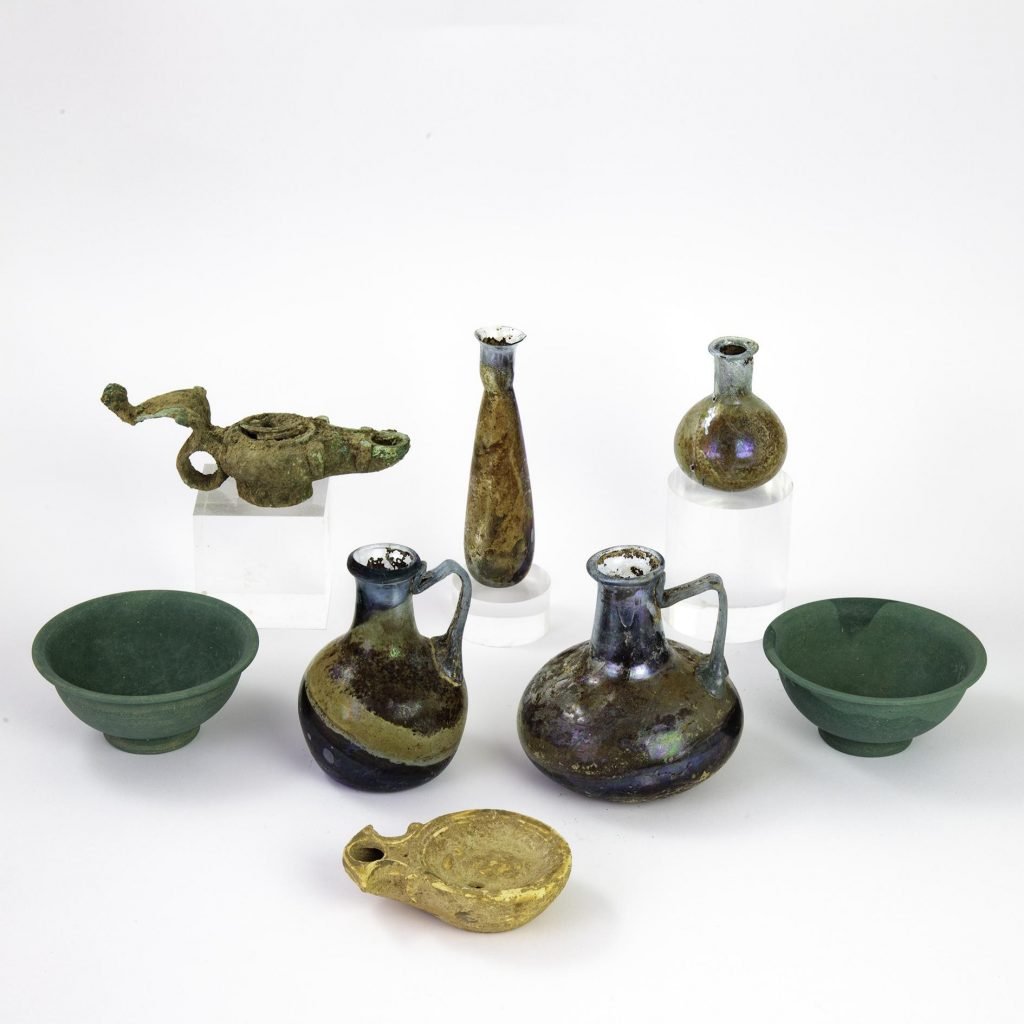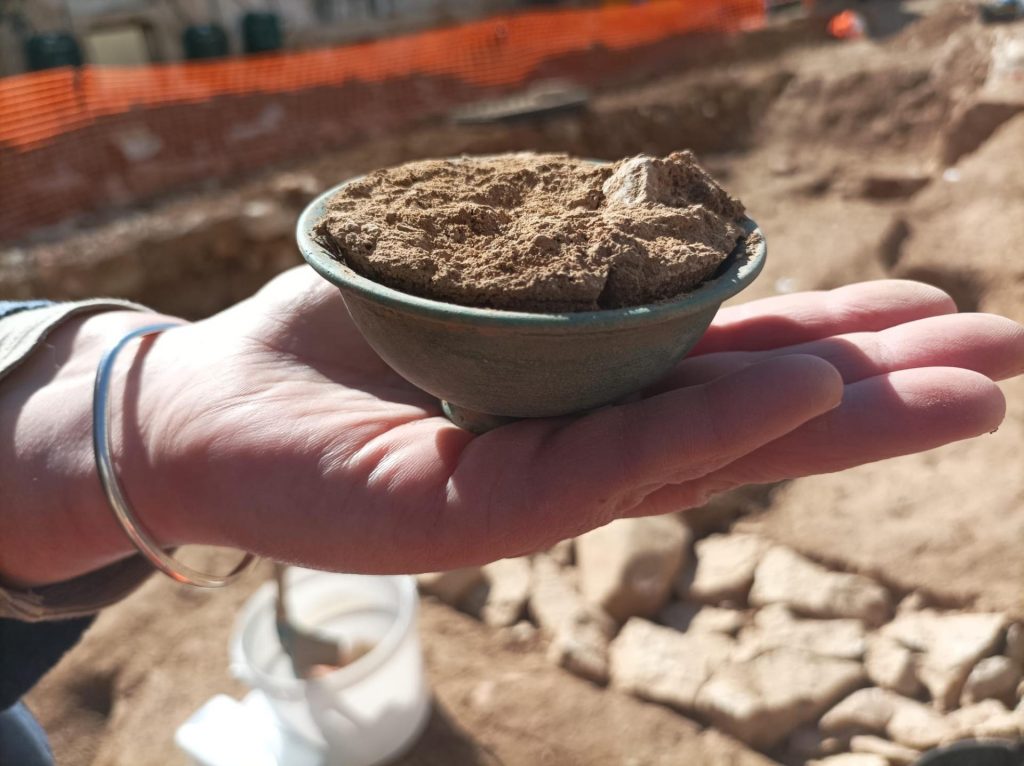Archaeology & History
Stunningly Preserved Ancient Roman Glassware Turns Up in a French Burial Site
The glass artifacts date from when the town was the Roman settlement known as Nemausus.

Archaeologists from the French National Institute for Preventive Archaeological Research (INRAP) have discovered a number of beautiful glass artifacts underground in Nîmes in the south of France.
Around the 1st century C.E., Nîmes was the Roman capital of the region, then named Nemausus, and was home to a population of up to 60,000. The name Nemausus came from the patron god of the region, worshiped by the Volcae Arecomici, a Gallic tribe living in the area during the Iron and Roman ages. The tribe also worshipped the Nemausicae, fertility and healing goddesses associated with the spring in Nîmes. Because of its rich Roman history, Nîmes has been called the “most Roman city outside Italy,” and the “French Rome.” The Romans were ruling France between the first century B.C.E. and the 5th century C.E., and the glass vases found by INRAP date to this time of Roman Gaul, between the 1st century B.C.E. and the 2nd century C.E.
Around the time the Roman glassware artifacts would have been created, city life centered around the main plaza and the stunning Corinthian-style temple, the Maison Carrée, which is still open to visitors today.

View of the uncovered ancient road in Nîmes (2024). © S. Pancin, R. Martin and B. Thomas, INRAP.
The vessels would have been used during feasts known as refrigerium, meaning “refreshment,” when worshippers would eat a ceremonial meal at family gravesites to commemorate the dead. Wine, which was said to assist with communicating with the dead, would be served by female priestesses, who oversaw the ceremony. Other artifacts found in the burial sites during the dig included glass and ceramic vases and lamps.
Also discovered were two major Roman roads running through the city, including the Domitian Way, which linked Italy with Spain through southern France. The wear and tear on the stone pavements of one road demonstrates how heavy the foot traffic was through the city in ancient times. The oldest roadways are between 2,100 and 2,200 year old, and the newest between 1,800 and 1,900 years old.

Vases and lamps unearthed in ancient tombs in Nîmes (2024). © C. Coeuret, INRAP.
The Roman glassware was found during excavations taking place on the Rue de Beaucaire, which runs to the east of the city center, during the construction of a new housing development. Several burial plots were uncovered outside of the city. Funeral pyres made from limestone and terracotta, where bodies were ceremoniously cremated, were also discovered. INRAP archaeologists also discovered the remains of an ancient Roman well beneath a modern development.

Glass paste cup unearthed in a funerary structure, Nîmes (2024) © M. Rochette, INRAP.





